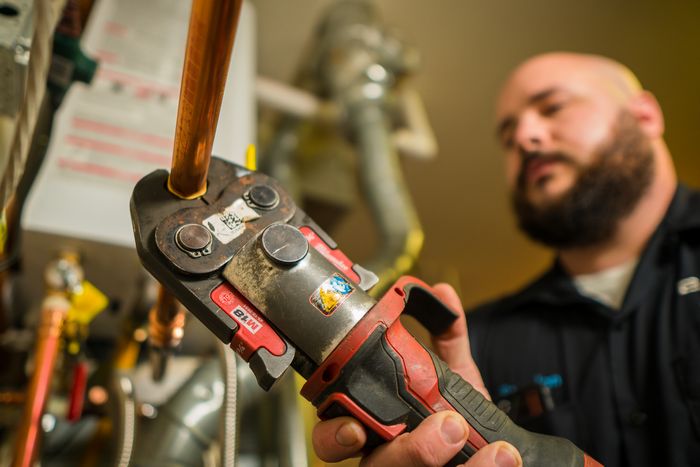A pedestal sump pump is crucial in preventing basement flooding and water damage. Suppose you live in a place prone to heavy rainfall or have a basement susceptible to water intrusion; understanding how a pedestal sump pump works and its benefits is essential. This article will explore pedestal sump pumps' details, operation, advantages, installation tips, and maintenance techniques.
What is a Pedestal Sump Pump?
A pedestal sump pump is a drainage system commonly installed in basements to remove excess water and prevent flooding. Unlike submersible sump pumps inside the sump pit, a pedestal sump pump is mounted on a pedestal or column above the pit. The pump draws water from the pit using a pipe or hose and pumps it out of the basement through another pipe that leads to a designated drainage area.
How Does a Pedestal Sump Pump Work?
A pedestal sump pump operates through a simple yet effective mechanism. There are following a step-by-step breakdown of how it works:
1. Pit Detection
When water enters the sump pit, a float switch or pressure sensor detects the rising water level.
2. Activation
Once the water level reaches a certain threshold, the float switch triggers the pump to turn on. In the case of a pressure sensor, the increasing water pressure prompts the pump to activate.
3. Impeller Action
The electric motor in the pedestal pump powers an impeller, a rotating device with vanes or blades. The impeller draws water from the sump pit through an inlet pipe. As the impeller spins, it expels water by creating centrifugal force.
4. Water Discharge
After the water is drawn in, it is pushed out through a discharge pipe connected to the pump. This pipe directs the water away from the basement to a designated drainage area, such as a storm drain or a dry well.
5. Pump Shut-Off
Once the water level in the sump pit drops to a certain point, the float switch or pressure sensor signals the pump to shut off. It prevents the pump from running unnecessarily and conserves energy.
Benefits of a Pedestal Sump Pump
While both pedestal and submersible sump pumps serve the purpose of preventing basement flooding, pedestal sump pumps offer distinct advantages:
1. Accessibility
The elevated design of a pedestal sump pump makes it easily accessible for maintenance and repairs. Since the pump is not submerged, it can be serviced without draining the sump pit.
2. Cost-effectiveness
Pedestal sump pumps are generally more affordable compared to submersible pumps. They are a cost-effective solution for homeowners on a budget.
3. Longevity
Due to their above-ground installation, pedestal sump pumps have more longevity than submersible pumps. The motor and electrical components are less prone to water damage, increasing durability.
4. Noise Reduction
Pedestal sump pumps produce less noise compared to submersible pumps. The motor is located above ground, reducing the noise levels typically associated with pump operation.
Comparison with Submersible Sump Pump
Here's a comparison between pedestal sump pumps and submersible sump pumps:
Pedestal Sump Pump:
- Placement: The motor of a pedestal sump pump sits above the sump pit, while the pump is placed at the bottom. This design makes it easier to access for maintenance.
- Space Requirements: Pedestal pumps require less space inside the sump pit, making them suitable for smaller pits or basements with limited space.
- Durability: Since the motor is above the water level, pedestal pumps tend to last longer than submersible pumps. However, they may not handle debris as effectively.
- Cost: Pedestal sump pumps are generally less expensive than submersible pumps, making them a cost-effective option for budget-conscious homeowners.
- Noise Level: Pedestal pumps tend to be noisier than submersible pumps due to the motor being above the pit.
Submersible Sump Pump:
- Placement: Submersible pumps are fully submerged in the sump pit, which makes them less obtrusive and quieter compared to pedestal pumps.
- Performance: Submersible pumps are often more powerful and capable of handling larger volumes of water and debris compared to pedestal pumps.
- Space Requirements: Submersible pumps require more space inside the sump pit, so they may not be suitable for smaller pits or basements with limited space.
- Durability: Since submersible pumps are fully submerged, they may be more susceptible to wear and tear from debris and sediment in the pit.
- Cost: Submersible sump pumps are typically more expensive than pedestal pumps due to their higher performance capabilities and construction.
Installation and Maintenance Tips
Proper installation and regular maintenance are crucial for ensuring your pedestal sump pump's optimal performance and longevity. Consider the following tips:
1. Sump Pit Preparation
Ensure the sump pit is clean and debris-free before installing the pump. It helps prevent clogs and ensures efficient water flow.
2. Positioning
Place the pedestal pump where it can easily access the sump pit. Make sure there is enough space for maintenance and repairs.
3. Discharge Pipe
Install a suitable discharge pipe that directs water away from your home's foundation. Ensure the pipe is adequately secured and sloped for efficient water drainage.
4. Regular Inspections
Periodically inspect the pump, float switch, and discharge pipe for any signs of damage or blockage. Clean or replace any clogged or malfunctioning parts promptly.
5. Testing and Maintenance Schedule
Regularly test your pedestal sump pump by running water into the sump pit. Verify that the pump activates and discharges water properly. Additionally, follow the manufacturer's recommended maintenance schedule for tasks such as lubricating the motor and checking the power supply.
Conclusion
In conclusion, a pedestal sump pump is a reliable and cost-effective solution for preventing basement flooding and water damage. Understanding its working mechanism, benefits, and maintenance requirements can help homeowners protect their basements from water intrusion. By following proper installation and maintenance practices, you can ensure your pedestal sump pump's longevity and optimal performance, providing peace of mind during heavy rains and groundwater issues.


